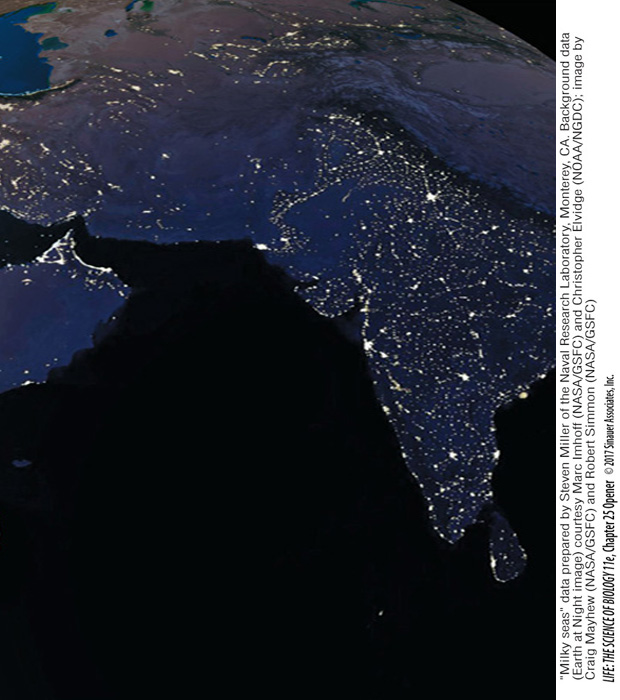Chapter Introduction
Bacteria,
Archaea, and
Viruses
PART SEVEN The Evolution of Diversity

investigating life
Bacteria Light Up the Sea
One night in January of 1995, the British merchant vessel Lima was off the coast of Somalia, near the Horn of Africa. This area is infamous for bands of pirates, so the crew was keeping a watchful eye on the seas when they spotted an eerie, whitish glow on the horizon. It was directly in their path, and there was no way to avoid it. Was this strange sight the result of some strange trick of piracy?
Within 15 minutes of first sighting the glow, the Lima was surrounded by shining waters for as far as her crew could see. The ship’s log recorded that “it appeared as though the ship was sailing over a field of snow or gliding over the clouds.” Fortunately for the crew, the glow had nothing to do with pirates.
For centuries, mariners in this part of the world had reported occasional “milky seas” in which the sea surface produced a strange glow at night, extending from horizon to horizon. Scientists up to that point had never been able to confirm the reality or the cause of such phenomena. It was well established, however, that many organisms emit light by bioluminescence, a complex, enzyme-
What kind of organism could cause the vast expanse of bioluminescence observed by the Lima? Some marine organisms emit flashes of light when they are disturbed, but they could not have produced the sustained and uniform glow seen in milky seas. The only organisms known to produce the level of sustained bioluminescence consistent with milky seas are certain prokaryotes, such as bacteria of the genus Vibrio. Using information supplied by the Lima, biologists scanned satellite images of the Indian Ocean for the specific light wavelengths emitted by Vibrio. The satellite images clearly identified thousands of square kilometers of Vibrio-produced milky seas.
Vibrio’s bioluminescence requires a critical concentration of a specific chemical signal produced by the bacteria, so at low densities, free-
How and why do bacteria communicate with one another?